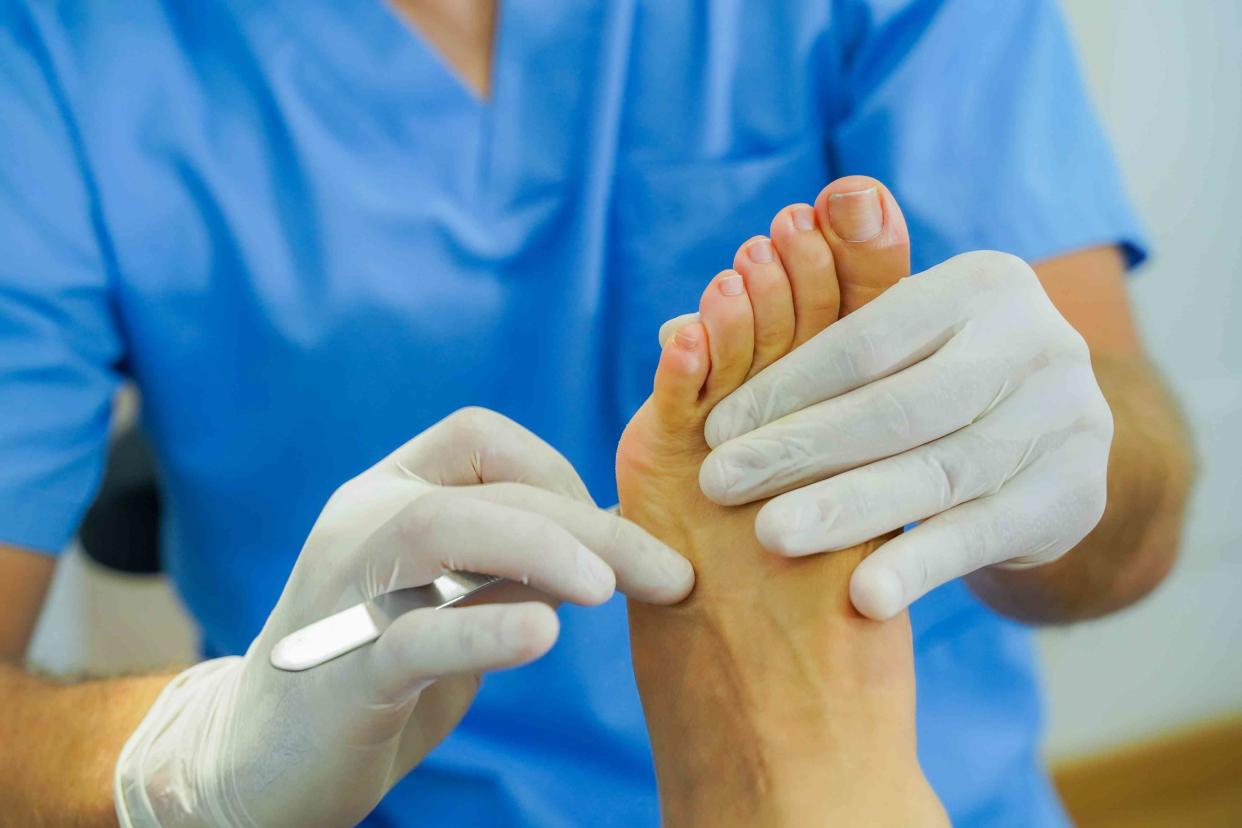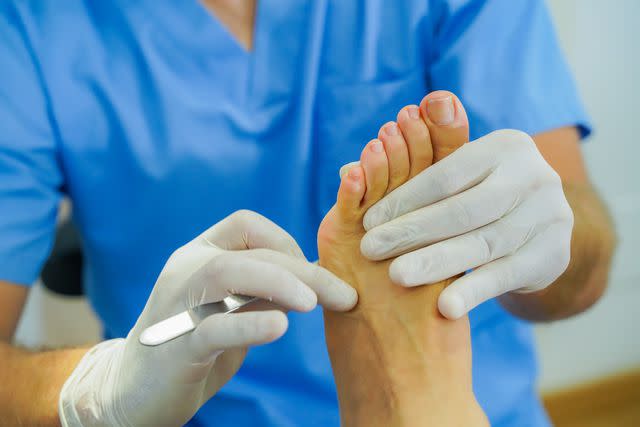What Is the Best Plantar Fasciitis Treatment?

mego.picturae / Getty Images
Medically reviewed by Adam H. Kaplan, DPM
The best treatment for plantar fasciitis depends on the severity of your condition. Options can include home remedies, medications, physical therapy, and, less commonly, surgery. People using nonsurgical treatments typically experience pain resolution within three to six months of consistent treatment.
This article discusses treatment options for plantar fasciitis, including home remedies and medical treatments to discuss with your healthcare provider.

mego.picturae / Getty Images
Home Remedies and Lifestyle Changes
Home remedies and lifestyle changes can help improve your plantar fasciitis symptoms. These can include:
Stretching: Perform calf and ankle stretches to help maintain your range of motion and stretch soft tissues affected by plantar fasciitis.
Rest: Avoid activities that increase pain (such as running) until symptoms improve. Or, change up your exercise routine—for example, run on a softer surface, avoid running uphill, or decrease the distance of your runs.
Check your shoes: Wear supportive shoes and avoid walking barefoot, which puts additional pressure on your plantar fascia (the tissue band connecting your heel bone to your toes).
Apply ice: Ice the bottom of your foot for 20 minutes at a time several times daily. Freeze a golf ball or bottle of water and roll it along the sole of your foot for an added massage.
Use a night splint: Plantar fasciitis often causes the most pain in the morning because the fascia on the bottom of your feet shortens while sleeping. Try a night splint to keep your fascia in a stretched position and reduce morning pain.
Add inserts: Shoe inserts can provide additional support to relieve stress on your plantar fascia. You can mold custom inserts (foot orthotics) for a more precise fit.
Wear a boot: You can wear a controlled ankle motion (CAM) walking boot during the day to keep the plantar fascia stretched and relieve heel pressure. This treatment is typically offered to people who have had symptoms for at least one year.
Complementary Treatments for Plantar Fasciitis
Complementary and alternative medicine (CAM) treatments—such as acupuncture or chiropractic care—may help decrease symptoms of plantar fasciitis. However, the scientific evidence to support these treatment options is lacking, so proceed cautiously.
Medications and Medical Interventions
If home remedies do not relieve your symptoms, you may need to try certain medications or medical procedures.
Over-the-Counter Medications
Over-the-counter medications can help reduce symptoms that occur with plantar fasciitis, including:
Tylenol (acetaminophen) for pain relief
Nonsteroidal anti-inflammatory drugs (NSAIDs) such as Aleve (naproxen), Advil/Motrin (ibuprofen), and Bayer (aspirin) to decrease inflammation and help with pain
Prescription Medications and Procedures
Depending on the severity of your plantar fasciitis, you may need prescription medications, such as oral corticosteroids.
A healthcare provider may also recommend certain procedures to treat plantar fasciitis, including the following:
Cortisone injections decrease inflammation from plantar fasciitis. Cortisone injections can have adverse side effects, such as weakening or rupturing the fascia.
Platelet-rich plasma (PRP) injections improve symptoms of plantar fasciitis and often have longer-lasting effects than other treatments (such as cortisone shots). However, PRP injections can be expensive and are usually not covered by insurance.
Extracorporeal shock wave therapy (ESWT) uses shock waves to treat plantar fasciitis. Although ESWT has been approved by the Food and Drug Administration (FDA), it usually is not covered by insurance.
Radiofrequency nerve ablation (RFNA) uses radio frequency waves to break up scar tissue that can form with plantar fasciitis. A healthcare provider punctures the skin over the painful area with a needle during this procedure. The needle is removed, and a radiofrequency cutter is inserted to destroy the damaged tissue.
Physical Therapy
Physical therapy can be beneficial for treating plantar fasciitis. Physical therapists use various modalities to help decrease pain and inflammation, such as:
Moist heat/ice
Manual therapy
Joint mobilization (a hands-on treatment to help you safely move your feet)
Massage
Ultrasound
Electrical stimulation
Light therapy
Prescribed exercises
Some physical therapists have additional training in dry-needling techniques, which have been shown to help decrease symptoms of plantar fasciitis.
A physical therapist can also recommend appropriate footwear and evaluate your biomechanics (bodily movements)—such as how you run—to help determine the underlying cause of your plantar fasciitis.
Surgery
People with severe plantar fasciitis who have not responded to other treatments may need surgery. The procedure to treat this condition is called plantar fasciotomy or plantar fascia release and is done endoscopically (using tiny tools) or through an open incision.
After surgery, you may need a walking boot for a few weeks to allow the tissue to heal. Physical therapy after surgery can help you regain your range of motion and strength. However, higher-level activities, such as running and jumping, are restricted for several months.
Surgery does not cure all cases of plantar fasciitis. Up to 25% of people will still have pain after the procedure.
Who Needs Surgery?
Up to 90% of people with plantar fasciitis will recover with three to six months of conservative (meaning nonsurgical) treatment. A healthcare provider may recommend surgery if symptoms last more than three to six months.
Summary
The best treatment for plantar fasciitis depends on the severity of your condition. It can be treated with home remedies, lifestyle changes, medications, physical therapy, and other procedures such as extracorporeal shock wave therapy or radiofrequency ablation. The condition resolves in approximately 90% of people after conservative treatment. However, in severe cases, surgery may be required.

